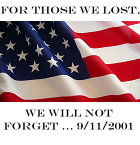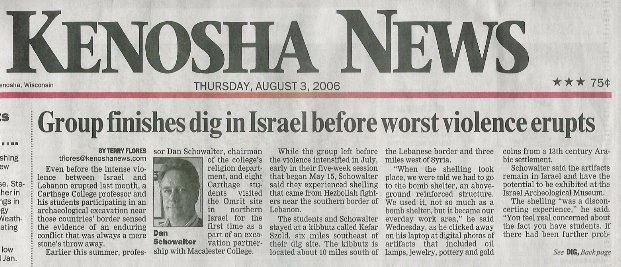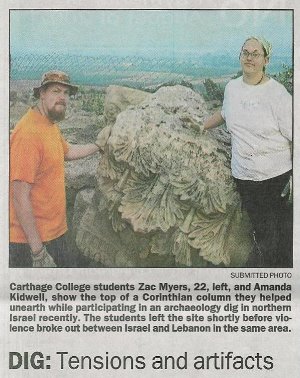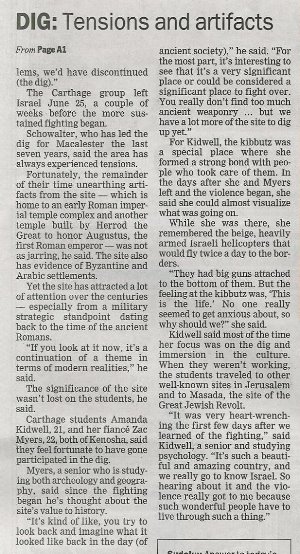 |
||||||||||
|
|
||||||||||
 |
 |
|
|
||||||||||||
|
The shelling “was a disconcerting experience,” he said. “You feel real concerned about the fact that you have students. If there had been further problems, we’d have discontinued (the dig).” The Carthage group left Israel JUne 25, a couple of weeks before the more sustained fighting began. Schowalter, who has led the dig for Macalester the last seven years, said the area has always experienced tensions. Fortunately, the remainder of their time unearthing artifacts from the site - which is home to an early Roman imperial temple complex and another temple built by Herrod the Great to honor Augustus, the first Roman emperor - was not as jarring, he said. The site also has evidence of Byzantine and Arabic settlements. Yet the site has attracted a lot of attention over the centuries - especially from a military stategic standpoint dating back to the time of the ancient Romans. “If you look at it now, it’s a continuation of a theme in terms of modern realities,” he said. The significance of the site wasn’t lost on the students, he said. Carthage students Amanda Kidwell, 21, and her fiance Zac Myers, 22, both of Kenosha, said they feel fortunate to have participated in the dig. Myers, a senior who is studying both archeology and geography, said since the fighting began he’s thought about the site’s value to history. “It’s kind of like, you try to look back and imagine what it looked like back in the day (of ancient society),” he said. “For the most part, it’s interesting to see that it’s a very significant place or could be considered a significant place to fight over. You really don’t find too much ancient weaponry ... but we have a lot more of the site to dig up yet.” For Kidwell, the kibbutz was a special place where she formed a strong bond with people who took care of them. In the days after Myers left and the violence began she, she said she could almost visualize what was going on. While she was there, she remembered the beige, heavily armed Israeli helicopters that would fly twice a day to the borders. “They had big guns attached to the bottom of them. But the feeling at the kibbutz was, ‘This is the life.’ No one really seemed to get anxious about, so why should we?” she said. Kidwell said most of the time her focus was on the dig and the immersion in the culture. When they weren’t working, the students traveled to other well-known sites in Jerusalem and to Masada, the site of the Great Jewish Revolt. “It was very heart-wrenching the first few days after we learned of the fighting,” said Kidwell, a senior and studying psychology. “It’s such a beautiful and amazing country, and we really go to know Israel. So hearing about it and the violence really got to me because such wonderful people have to live through such a thing.” |
|
last edited 8-10-2006 |
|||

